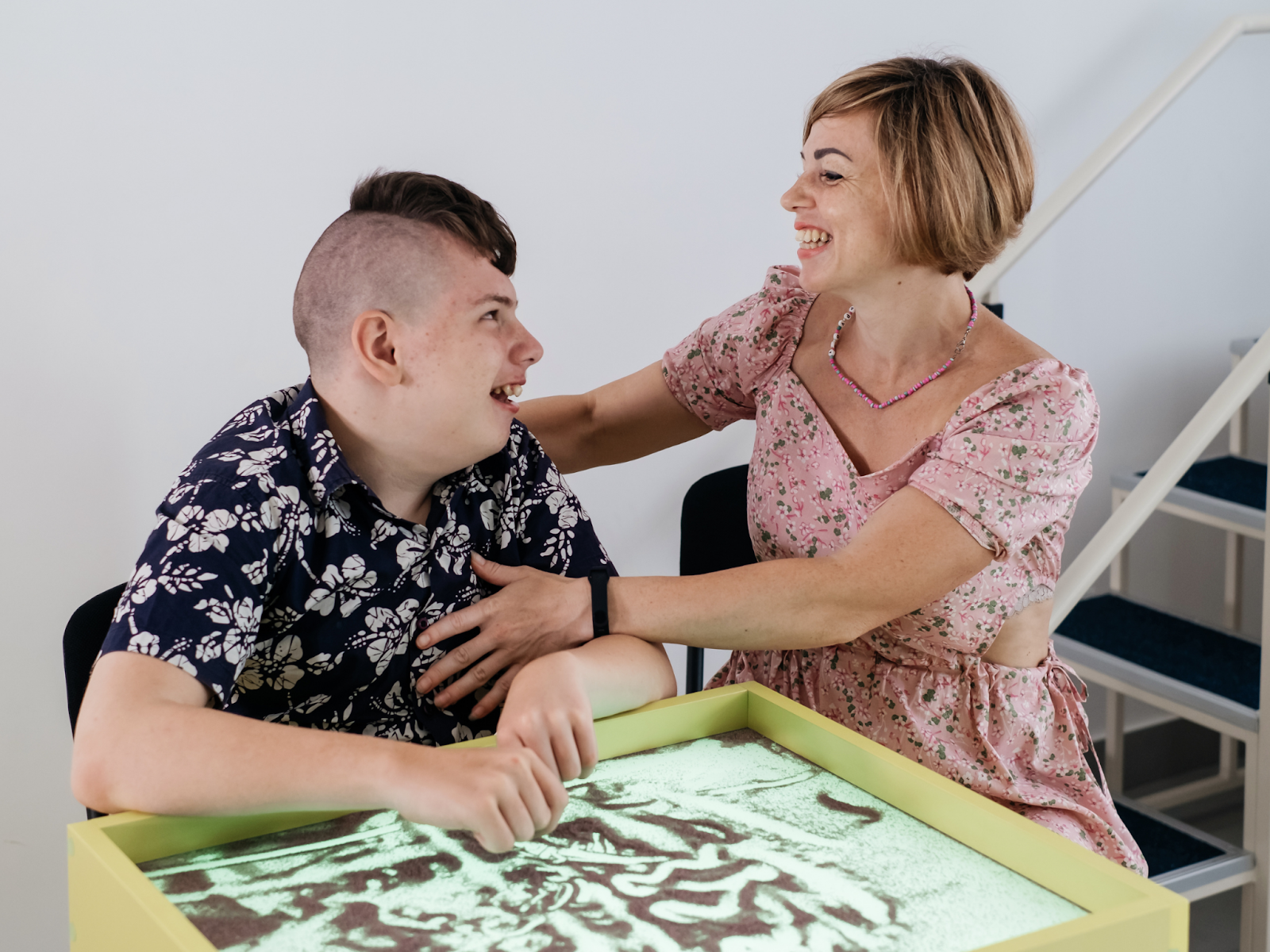Finding ways to soothe the body and mind is a normal part of being human. When someone has a disability that involves sensory processing issues, hypersensitivity, or decreased sensitivity to stimuli, there are tools they can use to help regulate their nervous system. So, what is a sensory swing, and how can it help someone self-regulate?
What is a sensory swing?
A sensory swing is a hanging wrap or seat that can be very calming and pleasant for someone seeking physical stimulation. They can be especially helpful for adults who find different types of movement and touch to be calming.
They are usually made out of soft, stretchy fabric that can provide gentle compression, soothing swinging movements, and balancing sensations without being too restrictive.
What is a sensory swing used for?
Adults with disabilities, especially those who find physical touch, pressure, and movement to be soothing, can find some relief by spending time in a sensory swing. Swings can help assist with what is known as “sensory integration,” helping the brain and body work together to process information and input.
Many neurodivergent individuals find the weightless, gentle rocking motion of sensory swings to be calming. They are known to soothe the vestibular system specifically, which is responsible for our sense of spatial orientation and balance.
Sensory swings are fairly common in therapeutic settings, but they can also be installed in the home as an easily accessible stress relief tool.
Sensory Swing Benefits
Just a few minutes in a sensory swing can have a calming effect that lasts for hours. But of course, everyone has different needs. Too much swinging can be overstimulating for some people.
Finding relief with a swing is all about the balance of sensory input and movements that are calming as opposed to stimulating.
Types of Sensory Swings
Because everyone has different sensory needs, the kind of swing they find most helpful will depend on what type of motion they find most soothing.
When choosing the sensory swing that’s best for you, think about what kind of movement you tend to seek, fabrics you like or don’t like, and how much enclosure you want. Here are a few popular styles of sensory swings:
- Stretchy Swings: These are compression sensory swings that are ideal for individuals who enjoy consistent pressure and different types of movement. They include a large piece of fabric that conforms to the body and envelops the user, kind of like a soft, flexible cocoon.
- Hammock Swings: Less like a traditional hammock, these are designed for reclining as opposed to laying down completely. They do not cover the user as much as stretchy swings and are good for those who enjoy a gentle swinging motion.
- Pod Swings: Also called cocoon swings, these have a mostly enclosed, teardrop-shaped design with a cushion at the base for stability. This type of swing is good for spinning, swinging, and balance.
DIY Sensory Swing
While there are lots of sensory swings you can buy that are ready to install, making your own swing is sometimes a cheaper, more accessible option. DIY swings also give you more freedom and choice when it comes to personalizing a sensory swing to suit your specific needs.
The most important consideration for these kinds of sensory tools is safety. Make sure the swing is securely anchored to something that can hold a good amount of weight.
Selecting breathable, non-flammable material is also key to creating a safe, soothing experience. The swing should be mounted in a way that allows you to comfortably enter and exit.
Discover More Disability Information and Support
NeuroNav is dedicated to providing helpful, accurate information so you can access the advice and support you need to live your best life.
For Californians eligible for the Self-Determination Program (SDP), our independent facilitation services offer guidance, advocacy, and relevant resources so you can get the most out of your enrollment.
Whether you are already in the program or just starting out on your SDP journey, we are here to help. Take advantage of our free consultation to see how NeuroNav can be your partner in self-determination.

What%20is%20a%20Sensory%20Swing%3F%20Benefits%20for%20Adults%20with%20Disabilities.png)


